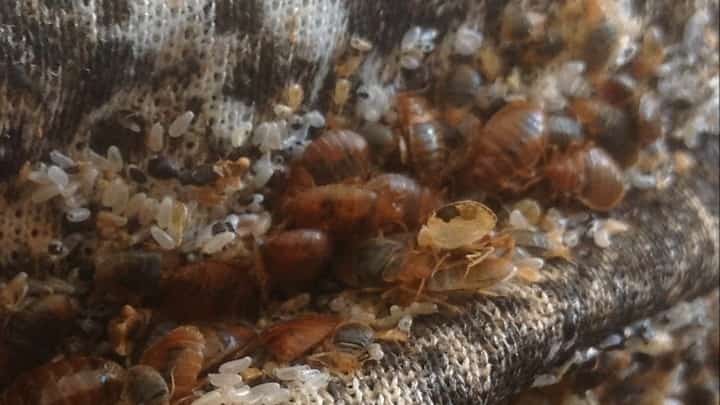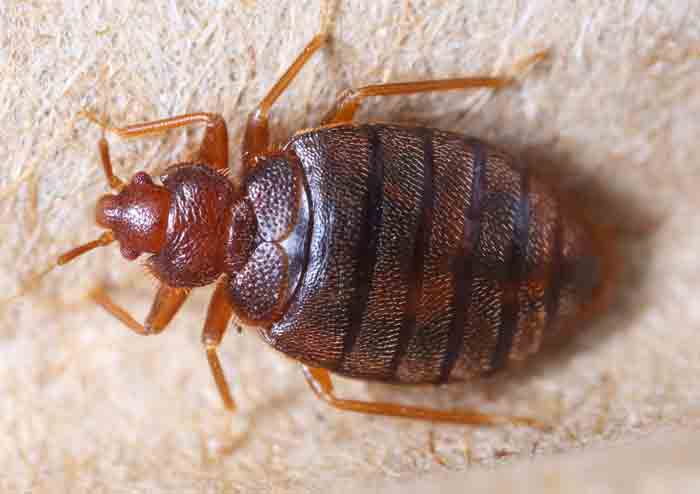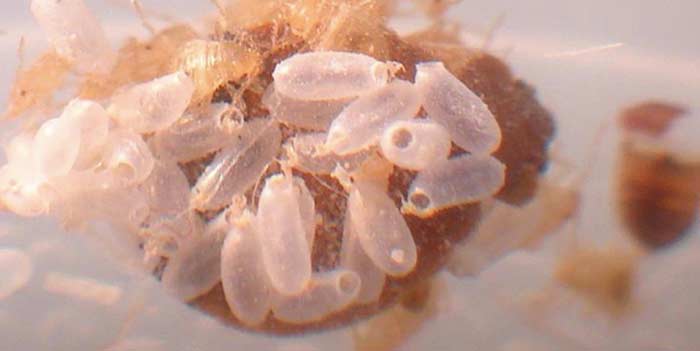Table of Contents
How to know if they are gone.
Reports indicate that about 88% of bed bug infestation in America comes back. After you have carried out the bed bug treatment, you will need to follow up in order to determine if the treatment was successful.
Gone Bed bug bites
If you experienced bed bug bites at the time when your home was infested with bed bugs, it will be easy for you to tell if the bed bugs no longer in your house. This is because, if you stop experiencing bites on your skin, it is an indicator that the bed bugs are gone.No Live bugs
Another way to tell if the bed bugs are completely gone is to look out for live bed bugs. When your house is infested with bed bugs, it is easy to notice the movement of live bed bugs especially at night.
No fecal matter
When your house is infested with bed bugs, there is noticeable fecal matter in the house. During treatment, all the fecal matter is cleaned. If you notice that there is new fecal matter in the house, then the bed bug treatment process was not successful. On the other hand, if the bed bug’s fecal matter can no longer be traced in your house, you can conclude that there are no more bed bugs in the house. Before drawing a conclusion that there are no bed bugs in your house, you will need to know where exactly to check for the fecal matter. You should carefully inspect the areas below for any availability of fecal matter;- Your box spring’s wood frame
- Along the seams of your mattress
- On the edge of your carpet
- The tops of baseboards
- Wall or ceiling junctions
- Behind pictures hanging on the walls of your house
- On the curtain seams
- Electrical outlets
- Behind the head board[1]
Casts skin
When bed bugs are developing, they shed their external skin off. This is usually necessary if they are to develop new skin. The shed skin is used as one of the signs to identify the presence of bed bugs. Just like the fecal matter, such cast skin is cleaned during the treatment process. If you notice newly shed bed bug skin after treatment, it is an indicator that there bed bugs still present in your house.No Stains
When you have bed bugs in your house, they are likely to get into your bed sheets and clothes. When crushed, they die and blood stains are left on the clothes. If you had cleaned all clothes and bed sheets during the treatment, you can monitor the success of the treatment by checking out for any new blood spots on the clothes.No eggs
Proper elimination of bed bugs involves doing away with all bed bug eggs which in normal cases are a risk of continued infestation since they hatch in 6 days.
No Bed bug smell
Sometimes, being able to recognize the distinctive odor of bed bugs is enough to tell that your bed bug treatment was or was not a success. While some people describe the smell of bed bugs to be a sweet musty smell, other say that the bed bugs smell like almonds, coriander or berries that are nearly over-ripe. [2]Can bed bugs come back after 6 months of first Treatment
Can they be back after 6 months?
The answer to this is yes. After eliminating bed bugs from your home, you should not just sit down and relax since these insects can return any time; even in as long as after six months. A review confirms that bed bugs can return after six months. From the review, the client explains how bad it is that after six months of no bed bug bites, the bites are back. The reviewer explains that an exterminator was used to get rid of the bed bugs and it was thorough enough for no bed bugs to be identified for six months. It is shocking that the bed bugs are back for the reviewer. One of the reasons bed bugs come back after such a long period of time is if you unknowingly brought them recently from a place that is highly infested with bed bugs. It is unlikely that those were eggs layer by the bed bugs of the previous infestation since they only take roughly six days to hatch. If that were the case, you would have noticed the new infestation after the first month of frequent infestation.What factors will determine the time they will take to return?
There several factors that determine whether or not bed bugs will come back. These factors also determine after how long you are likely to experience another bed bug infestation. The factors include the following;Frequency of inspection
How often you inspect your house for bed bugs following treatment plays a role in determining how long it will take before bed bugs infest your home once again. Usually, a regular inspection ensures that any bed bugs that may have escaped treatment are killed as soon as they are noticed giving them no chance to lay eggs and hatch into many more bed bugs.Level of bed bug infestation
If your home was heavily infested with bed bugs at the time you carried out the treatment, there is a possibility that some bed bugs may have escaped and are still hiding in your house. In most cases, heavily infested areas are at a higher risk of experiencing another infestation within a very short time.Mode of treatment
Some methods of bed bug treatment are more effective than others. Methods that involve repelling the bed bugs rather than killing the bed bugs expose you to a risk of another bed bug infestation within a very short time. You are therefore advised to avoid using repulsion a way of getting rid of bed bugs.How thoroughly the treatment was done
Treatment is considered thorough if it eliminates all the bed bugs as well as any available bed bug eggs. Most people who experience bed bug come-back are those who used a treatment method that was not thorough enough to eliminate all bed bug eggs. Coby Schal, an entomologist from North Carolina University carried out a study on female bed bugs. From the study, it was found that female bed bugs lay about 500 eggs. When the eggs hatch, you will have a single infestation from just one bed bug. This explains why, to do away with the infestation, all bed bugs, must be killed and no eggs should be left in your house.What to do after bed bug treatment
After eliminating bed bugs from your home, you may want to know what to do so that you are not faced with future bed bug infestations. This is because bed bugs are very good at hiding and they may also sneak into your apartment once again. Some people report that bed bugs still come back after treatment as discussed above. There are a number of things you will need to do.Inspect all locations in your house
After bed bug treatment, you are advised to inspect all around your house to ensure all bed bugs were killed as well as bed bug eggs. Some bed bugs may have escaped during the treatment and it is these bugs that in the end multiply into many more and the infestation comes back. If you find any bed bugs, spray the bed bugs dead immediately. The areas in your house that you must inspect are; The bed room Here, you must check your mattress well along the edges. You must also check the box spring of your bed as most bed bugs hide here. Failing to carry out such an inspection puts your house at a risk of another infestation since a bed bug left can lay eggs which hatch into many more bed bugs. This in turn makes it impossible to get rid of bed bugs completely. You are advised to also inspect your bed sheets and clothes to ensure no bed bugs are hiding in them. If possible, wash them another time to keep them very clean and to kill any eggs that may have escaped the treatment. Inspect your living room Furniture in your living room need to be inspected after treatment since they may be hiding places for bed bugs that were not killed. Just like the case of bed room inspection, any bed bugs found should be killed immediately.Carry out consecutive treatments
Most people fail to completely do away with the bed bugs since they think just one treatment will be sufficient to forever do away with the bed bugs. You should repeat the treatment in a span of approximately one week. This ensures any bed bugs that were left are killed freeing your house of any future infestation. Any eggs that were probably left out are also eliminated in the second or third treatment.Form a barrier around your home
Sometimes, the reason bed bugs still come back is because you do not address the real problem which is the source of the bed bugs. If the bed bugs are for instance coming from your neighbor’s apartment, you will need to create a barrier that ensures bed bugs do not make it to cross over from your neighbor’s house. You should ensure such barriers are placed on your windows, doors or any other openings that are connecting your house with your neighbors.Vacuum floors, carpets, furniture, bed frames, crevices and cracks regularly
You are advised to use crevices tools or a brush. After the bed bug treatment, vacuum the listed places and items at intervals of about three to five days. This keeps your house in check for any bed bugs that are still alive or have been hatched. Each time you are through with the vacuuming process; dispose the bag outside your home.Mattresses and box springs previously infested should be enclosed in a cover
Such covers are labeled, ‘allergen rated’ and are specified for bed bugs. The cover should not be removed until a year is over.Monitor your house for any bed bug signs
After carrying out the bed bug treatment, you must be on the watch out for any bed bug signs. The common signs of bed bug infestation are; presence of fecal matter or fecal spots, blood spots of crushed bed bugs, bed bug eggs or egg shells, and live bed bugs. As soon as any of the signs are identified, a thorough bed bug treatment should be carried out.Ask your neighbors to carry out the treatment
Even though you may set up barriers that prevent bed bugs from infesting your home from your neighbor’s apartment, some of the bugs will always find a way to escape through to your house. The best thing to do would be ask your neighbors to kill bed bugs in their apartment as well. This ensures that the people around you do not expose you to future bed bug infestation. Always inspect your clothes or bag after coming from areas you suspect may have bed bugs. Sources [1] http://www.vdacs.virginia.gov/pdf/bb-identify1.pdf [2] http://www.bedbug-answers.com/bed-bug-symptoms.html Further Reading- Can Bed Bugs Fly-Do they have Wings-How Far can they Travel
- Diatomaceous Earth for Bed Bugs-How to Use & Best Reviews
- DIY Bed Bug Heat Treatment: Success Rate,Temperature Chart, Preparation & Reviews
- Does Vinegar Kill Bed Bugs? Can it be Used for Bites?
- How to Get Rid of Bed Bugs on Mattress- Best Covers, Protectors & Encasement Reviews
- Can Bed Bugs live on or Bite Dogs & Cats (Pets)?
- Bugs that look like Bed Bugs-Beetles & Others that Resemble or Mistaken
- Bed Bug Bombs-Do Foggers work? Effectiveness & Reviews
- Bed Bug Repellents -Natural Homemade, Creams, Electronic & Reviews
- How do Bed Bugs Spread? Are they Contagious? How Fast/Easily from Person, Room or House?
- Best Bed Bug Sprays-DIY Homemade, Natural, Brand Reviews
- Flea Bites vs Bed Bug Bites + Differences & Pictures
- How to Prevent Bed Bugs-Bites while Sleeping at Home, School, Hotel & Travelling
- How to get rid of Bed Bugs on Clothes-Can they Live, Bite through or Travel on Laundry
- Fumigation for Bed Bugs-Cost & Preparation
- How to get Bed Bugs out of Carpet with Cleaner & Powder
- How Long do Bed Bugs Live Without Food, Host, Air, in Cold & After Spraying
- Bed Bug Rash on Skin, Pictures, Treatment, Allergy & Symptoms
- Where do Bed Bugs Hide and how to Find them
- Mosquito Bites vs Bed Bug Bites-What’ are the differences
- Identifying Bed Bug Eggs- How they look like, Images & destruction
- How do you know if you have Bed Bugs-Symptoms & Signs
- Bed Bug vs Spider Bites- Differences with Pictures
- Bed Bug Sniffing Dogs-How they smell, Sense, Roscoe, Breeds & Cost
- What are Bed Bugs? Names in other Languages
- Where do Bed Bugs come from? Causes, how you get them & Start
- How to Kill/Get Rid of Bed Bugs Fast Yourself Naturally for Good
- Bed Bugs in Hair Symptoms, Pictures & Get rid
- Types of Bed Bugs
- Bed Bug Poop/Droppings-How it looks like, Pictures +Identification
- Bed Bug Shells, Cast Skin & Exoskeleton
- Can you See Bed Bugs with the Naked eye? Pictures, Size, Color & Anatomy
- Dust Mite vs Bed Bug Bites
- Bed Bug life cycle-Eggs, Baby(Nymph) to Adult Stages & Pictures
- How to Detect Bed Bugs-Detectors, Light & Verifi Reviews
- How to know if Bed Bugs are gone after Treatment & what to do
- Will Bleach Kill Bed Bugs-How does it work?
- Best Bed Bugs Traps- DIY Homemade, Co2, Yeast + Reviews
- How to Deal with Bed Bugs in your Car
- Bed Bugs in Couch-Covers, Signs & How to Get rid
- How to Kill Bed Bugs with Steam: Best Steamers & Guide + Tips
- Does Alcohol Kill Bed Bugs? Rubbing, Isopropyl & Percentage
- How Long do Bed Bug Bites Last, Take to Appear, Go Away & Heal
- Natural Predator of Bed Bugs-What Insects/Bugs eat Bed Bugs?
- Can Bed Bugs Live in TVs & Other Electronics? How to get them out
- Do Bed Bug Bites Itch or Hurt?
- Bed Bug Interceptor-How it works, DIY & Reviews
- What do Bed Bug Bites look like? Pictures & Identification Steps
- What Attracts Bed Bugs & things they Hate /Dislike Most
- Can Bed Bugs make you Sick? How are they Dangerous?